Sometimes a bit too tasteful and generic, but when Still Alice narrows its focus down to how this exact family and woman in particular deal with her diagnosis and eventually descent, it's deeply moving stuff. Praise for much of it working goes to Julianne Moore’s central performance and Kristen Stewart’s sober, quiet supporting work as her youngest daughter.
Too often though Still Alice focuses on the abstract reality of living with a degenerative disease and not the day-to-day grind. The story draws us in the most when it reveals how linguist professor Alice deals with the betrayal of her mind, or the emotional drainage that her husband is feeling. Numerous scenes that display the ugly, naked emotions are deeply felt and quite affecting. It’s just that they’re surrounded by moments that feel like a checklist from this kind of melodrama instead of organically emerging from the narrative.
Case in point, Kate Bosworth and Hunter Parrish appear as Alice’s older children, but they’re missing in action for much of the running time. Moore really only interacts with Alec Baldwin as her dutiful and supportive husband, and Stewart as her actress daughter. Baldwin and Stewart nail their respective roles, a scene late in the film in which has an emotional breakdown in front of Stewart lingers as one of the few times when Still Alice shakes off the prestige and goes for the real, gritty, ugly drama.
Still Alice works so successfully because of Julianne Moore. Always a dependable actress, she’s delivered a gallery of troubled wives and mothers of dynamic range. And her work here is just as good as her beloved turns in Magnolia or The End of the Affair. She makes Alice into a real person, and her final moment with Stewart is a gut-punch. It’s also the final scene of the film, so while Still Alice may have stumbled along its way towards the finish line, it finishes on a very strong note.
Still Alice
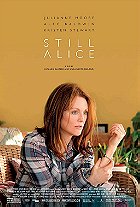 Posted : 10 years, 2 months ago on 28 April 2015 08:49
(A review of Still Alice (2014))
Posted : 10 years, 2 months ago on 28 April 2015 08:49
(A review of Still Alice (2014)) 0 comments, Reply to this entry
0 comments, Reply to this entry
The Thief of Bagdad
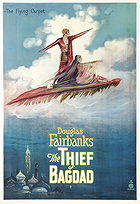 Posted : 10 years, 2 months ago on 28 April 2015 04:17
(A review of The Thief of Bagdad (1924))
Posted : 10 years, 2 months ago on 28 April 2015 04:17
(A review of The Thief of Bagdad (1924))Douglas Fairbanks, one of the great founding fathers of cinema, introduced numerous characters to the silver screen – Robin Hood, Zorro, the Three Musketeers, and in this film, he brought the flavor and images of the Arabian Nights to vivid life. The Thief of Bagdad is pure spectacle and lavish production design, held together by Fairbanks’ live-wire and stunt-heavy central performance.
Despite not being the director of this material, Fairbanks feels like the main guiding hand of this production. Great movie stars had a talent for doing this, warping directors and material into their great personas. The outcomes varied, but Fairbanks and director Raoul Walsh crafted something truly magical with The Thief of Bagdad.
Narrative coherence and deep substance is not its main concern, and occasionally the bloated running time does make some of it a little heavy to work through, but the journey is beyond worth it. Fairbanks plays Ahmed, a thief who lives by his wits, who uses a magic rope to steal from the caliph. While pilfering the palace, he spots the caliph’s beautiful daughter, and falls in love. Wanting to see her again, he steals various items to make him appear to be a wealthy suitor. And the plot keeps swirling on, throwing in a Mongol prince plotting to conquer the city, a traitorous slave girl, a flying carpet, a horse with wings, and numerous other set pieces that linger in the imagination.
While the 1940 remake may have streamlined the film’s various plot strands and cohered into a more manageable plot line, that doesn’t mean the original doesn’t hold its own against that highly revered classic. William Cameron Menzies production design is a thing of grandiosity and opulence, creating a magical kingdom which could only exist in the movies. This is probably the strongest selling point of the movie, along with the special effects work that, for the time, were as forward-thinking and seamless as the work in modern films like Gravity.
The greatest of all special effects may be Fairbanks’ physicality, as he does daring stunts and feats that often feel like he’s thumbing his nose at gravity and the laws of physics. These things never seem to apply to him, he exists as lightning in human form. He moves with a feline grace in some moments, but in others he bounces around like he’s what would happen if a rubber ball gained sentience and mobility.
Most of the supporting players recede into the background, mainly Fairbanks’ romantic interest, Julanne Johnston. Johnston looks stunning in her various costumes, but she’s given little to do aside from this. The lone supporting player who makes a lasting impression is Anna May Wong as the duplicitous slave girl. Beautiful and deadly, she’s a toxic snake hidden in a tranquil and lovely garden. She makes the most of her screen time and leaves you wanting more from her. She does a similar thing in Shanghai Express, and gets to generate intense sexual chemistry with Marlene Dietrich in that film as well.
A lot of time, effort, love, and care went into the production of this film. In 1924, it flopped, but time has only been kind and loving to it. It now stands as possibly the greatest film that Fairbanks made. A masterpiece of spectacle and pure entertainment. Here is a fairy tale land that never existed outside of the movies, an enchantment which demonstrates the transported and transformative powers of the cinema.
Despite not being the director of this material, Fairbanks feels like the main guiding hand of this production. Great movie stars had a talent for doing this, warping directors and material into their great personas. The outcomes varied, but Fairbanks and director Raoul Walsh crafted something truly magical with The Thief of Bagdad.
Narrative coherence and deep substance is not its main concern, and occasionally the bloated running time does make some of it a little heavy to work through, but the journey is beyond worth it. Fairbanks plays Ahmed, a thief who lives by his wits, who uses a magic rope to steal from the caliph. While pilfering the palace, he spots the caliph’s beautiful daughter, and falls in love. Wanting to see her again, he steals various items to make him appear to be a wealthy suitor. And the plot keeps swirling on, throwing in a Mongol prince plotting to conquer the city, a traitorous slave girl, a flying carpet, a horse with wings, and numerous other set pieces that linger in the imagination.
While the 1940 remake may have streamlined the film’s various plot strands and cohered into a more manageable plot line, that doesn’t mean the original doesn’t hold its own against that highly revered classic. William Cameron Menzies production design is a thing of grandiosity and opulence, creating a magical kingdom which could only exist in the movies. This is probably the strongest selling point of the movie, along with the special effects work that, for the time, were as forward-thinking and seamless as the work in modern films like Gravity.
The greatest of all special effects may be Fairbanks’ physicality, as he does daring stunts and feats that often feel like he’s thumbing his nose at gravity and the laws of physics. These things never seem to apply to him, he exists as lightning in human form. He moves with a feline grace in some moments, but in others he bounces around like he’s what would happen if a rubber ball gained sentience and mobility.
Most of the supporting players recede into the background, mainly Fairbanks’ romantic interest, Julanne Johnston. Johnston looks stunning in her various costumes, but she’s given little to do aside from this. The lone supporting player who makes a lasting impression is Anna May Wong as the duplicitous slave girl. Beautiful and deadly, she’s a toxic snake hidden in a tranquil and lovely garden. She makes the most of her screen time and leaves you wanting more from her. She does a similar thing in Shanghai Express, and gets to generate intense sexual chemistry with Marlene Dietrich in that film as well.
A lot of time, effort, love, and care went into the production of this film. In 1924, it flopped, but time has only been kind and loving to it. It now stands as possibly the greatest film that Fairbanks made. A masterpiece of spectacle and pure entertainment. Here is a fairy tale land that never existed outside of the movies, an enchantment which demonstrates the transported and transformative powers of the cinema.
 0 comments, Reply to this entry
0 comments, Reply to this entry
The Day the Earth Stood Still
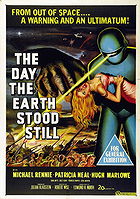 Posted : 10 years, 2 months ago on 28 April 2015 04:17
(A review of The Day the Earth Stood Still)
Posted : 10 years, 2 months ago on 28 April 2015 04:17
(A review of The Day the Earth Stood Still)I do believe that The Day the Earth Stood Still deserves some credit for crafting a science-fiction story that prefers to move along at a slower, more deliberate pace. It’s a science-fiction film that explores elements of humanism and a call for peace and understanding. But that’s about where my enthusiasm for this film begins and ends.
The cast is game, the effects are top-notch for their era, and it’s beautifully shot, but it’s also tepid, high-minded, and a bit of a bore to get through. The symbolism gets a bit heavy-handed at numerous turns, Klaatu (Michael Rennie) plays out like an outer-space Jesus, bringing about a peaceful gospel and call to forming a loving brotherhood of man. Except that he also threatens that humanity either gets its shit together, or face destruction. This doesn’t really brush against the religious symbolism. What else does God do a lot of in the Bible than demand obedience of his whims or threaten dire consequences for disobedience?
Yet the film also demands that the world learn to get on with each other in a peaceful cohabitation. Here is a film made during the height of paranoia in the Cold War that questions what the hell are we doing, and offers a jaundiced view of where we might be headed if we continue on this path. The narrative gets muddled, and the pace gets a lost tedious if you try to critically think about the confused religious allegory married to the call for peace. It works decently enough as a message movie, and there’s things to admire here, yet I’m not entirely sold on its status as a beloved classic.
The cast is game, the effects are top-notch for their era, and it’s beautifully shot, but it’s also tepid, high-minded, and a bit of a bore to get through. The symbolism gets a bit heavy-handed at numerous turns, Klaatu (Michael Rennie) plays out like an outer-space Jesus, bringing about a peaceful gospel and call to forming a loving brotherhood of man. Except that he also threatens that humanity either gets its shit together, or face destruction. This doesn’t really brush against the religious symbolism. What else does God do a lot of in the Bible than demand obedience of his whims or threaten dire consequences for disobedience?
Yet the film also demands that the world learn to get on with each other in a peaceful cohabitation. Here is a film made during the height of paranoia in the Cold War that questions what the hell are we doing, and offers a jaundiced view of where we might be headed if we continue on this path. The narrative gets muddled, and the pace gets a lost tedious if you try to critically think about the confused religious allegory married to the call for peace. It works decently enough as a message movie, and there’s things to admire here, yet I’m not entirely sold on its status as a beloved classic.
 0 comments, Reply to this entry
0 comments, Reply to this entry
A Day at the Races
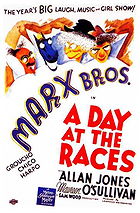 Posted : 10 years, 2 months ago on 28 April 2015 04:17
(A review of A Day at the Races)
Posted : 10 years, 2 months ago on 28 April 2015 04:17
(A review of A Day at the Races)Groucho Marx considered A Night at the Opera and A Day at the Races to be the best films that the Marx Brothers ever made. I’ll grant that Opera is probably their last masterpiece, but A Day at the Races is the first film in which the cracks begin to show in their formula.
Their run of films at Paramount, beginning with The Cocoanuts and ending with Duck Soup, were a stunning display of anarchic glee, gleefully leaving behind typical narrative structure in favor of a series of gags and tricky word play. Once they transferred to MGM, they were forced to play second-fiddle to bland romantic leads and lost their brother Zeppo along the way. Zeppo’s winking performance as the bland romantic lead was in perfect alignment with his brother’s various forms of anarchy, and replacing him cause the group to lose a bit of its magic.
It sounds like I hated A Day at the Races, and I didn’t. It’s perfectly winning, even if it doesn’t hold up quite as well as Duck Soup or Horse Feathers. What I noticed while watching this film is that the routine formula of the films they made at MGM were solidifying.
Irving Thalberg brought the Marx Brothers to MGM and told them that their assault on propriety in all of its various forms made them unlikable to general audiences, and they needed to realign their brand. Enter in his bright idea to make them supporting players in their own films, despite being billed as the main act. They would help pretty, conventional leads, typically lower-level players in MGM’s pantheon of stars, and obtain happiness and romance. These films weren’t bad, but they were limiting in highlighting the best of what the Marx Brothers had to offer.
None of the other films they made were bad, but they weren’t as magical. A Day at the Races is the last film they made that could be considered a classic. For me, it’s definitely second-tier, but it’s still damn enjoyable. Except for a scene in which the brothers perform a routine in blackface, an ugly reminder of things that were once considered perfectly fine in mass entertainments.
A Day at the Races tells a swirling and complicated story about the brothers helping out Maureen O’Sullivan (one of their best leading ladies in the post-Paramount years) obtain the money to keep her sanitarium open by betting on horse racing. Granted, Allan Jones is a bit of a lead-balloon, but Margaret Dumont is back in fine form and gets to be highly animated in several sequences. A particularly hilarious medical examination involving the Marx Brothers and Dumont is an absolute standout. And when A Day at the Races ends, it feels like the closing chapter of the classic years. The films after this would contain sparkling moments, but pound-for-pound they wouldn’t reach the comedic heights of these earlier years.
Their run of films at Paramount, beginning with The Cocoanuts and ending with Duck Soup, were a stunning display of anarchic glee, gleefully leaving behind typical narrative structure in favor of a series of gags and tricky word play. Once they transferred to MGM, they were forced to play second-fiddle to bland romantic leads and lost their brother Zeppo along the way. Zeppo’s winking performance as the bland romantic lead was in perfect alignment with his brother’s various forms of anarchy, and replacing him cause the group to lose a bit of its magic.
It sounds like I hated A Day at the Races, and I didn’t. It’s perfectly winning, even if it doesn’t hold up quite as well as Duck Soup or Horse Feathers. What I noticed while watching this film is that the routine formula of the films they made at MGM were solidifying.
Irving Thalberg brought the Marx Brothers to MGM and told them that their assault on propriety in all of its various forms made them unlikable to general audiences, and they needed to realign their brand. Enter in his bright idea to make them supporting players in their own films, despite being billed as the main act. They would help pretty, conventional leads, typically lower-level players in MGM’s pantheon of stars, and obtain happiness and romance. These films weren’t bad, but they were limiting in highlighting the best of what the Marx Brothers had to offer.
None of the other films they made were bad, but they weren’t as magical. A Day at the Races is the last film they made that could be considered a classic. For me, it’s definitely second-tier, but it’s still damn enjoyable. Except for a scene in which the brothers perform a routine in blackface, an ugly reminder of things that were once considered perfectly fine in mass entertainments.
A Day at the Races tells a swirling and complicated story about the brothers helping out Maureen O’Sullivan (one of their best leading ladies in the post-Paramount years) obtain the money to keep her sanitarium open by betting on horse racing. Granted, Allan Jones is a bit of a lead-balloon, but Margaret Dumont is back in fine form and gets to be highly animated in several sequences. A particularly hilarious medical examination involving the Marx Brothers and Dumont is an absolute standout. And when A Day at the Races ends, it feels like the closing chapter of the classic years. The films after this would contain sparkling moments, but pound-for-pound they wouldn’t reach the comedic heights of these earlier years.
 0 comments, Reply to this entry
0 comments, Reply to this entry
Big Hero 6
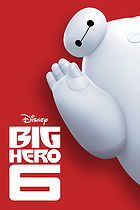 Posted : 10 years, 2 months ago on 16 April 2015 03:36
(A review of Big Hero 6)
Posted : 10 years, 2 months ago on 16 April 2015 03:36
(A review of Big Hero 6)Compared to the more ambitious, artistic, original, and daring works like Song of the Sea and The Tale of the Princess Kaguya, Big Hero 6 doesn’t hold a candle to them and makes for a bland Oscar winner. Taken on its own merits away from that Oscar win, Big Hero 6 is a perfectly charming, funny, warm-hearted film that marries the superhero origin story to one about grief and overcoming loss.
I suppose one could look squarely at former Pixar head John Lasseter’s ascension to head of Walt Disney’s animation department for the sudden upward trajectory of their films. Tangled and Frozen were very enjoyable spins of their respective fairy tales, grafting on to them themes of sisterhood and personal agency in addition to the lively musical scores. Big Hero 6 isn’t a musical, but it’s another solid entry in Lasseter’s tenure as Disney’s overseer.
About as faithful an adaptation as any of Disney’s typical fairy tale fare, which is to say not at all besides a title and some broad strokes, this film sees the House of Mouse dipping into an obscure Marvel comic book for source material. While the comic has ties to the X-Men universe, those have obviously been dropped as a rival studio owns the film rights to that property. Instead, we get a bunch of science-geeks using their intelligence to create gadgets that enable them to perform daring feats.
While the film is overall more playful, and Baymax is one of the lovable standout character of 2014, the narrative attached to the film is muddled and confused, at best. Not only are we witnessing a character deal with the loss of a close relative, we’ve also got several other characters to introduce and many of them get the shaft. Mostly the film’s female characters are regulated to second or third class status.
In addition to having to introduce and develop a large ensemble of characters, we also get the typical superhero origin story beats, a third-act reveal that’s preposterous, and a typical Disney fake-out death that’s just tired at this point. No one really believed that character was dead, did they? C’mon, Disney wouldn’t do that to a potential revenue source as clearly designed to be beloved and sell merchandise as that one. Having said all of that, the film succeeds more than it falters, and I wouldn’t mind spending more time with these characters in the inevitable sequel(s). Hopefully next time around they’ll give more attention to the female supporting players.
I suppose one could look squarely at former Pixar head John Lasseter’s ascension to head of Walt Disney’s animation department for the sudden upward trajectory of their films. Tangled and Frozen were very enjoyable spins of their respective fairy tales, grafting on to them themes of sisterhood and personal agency in addition to the lively musical scores. Big Hero 6 isn’t a musical, but it’s another solid entry in Lasseter’s tenure as Disney’s overseer.
About as faithful an adaptation as any of Disney’s typical fairy tale fare, which is to say not at all besides a title and some broad strokes, this film sees the House of Mouse dipping into an obscure Marvel comic book for source material. While the comic has ties to the X-Men universe, those have obviously been dropped as a rival studio owns the film rights to that property. Instead, we get a bunch of science-geeks using their intelligence to create gadgets that enable them to perform daring feats.
While the film is overall more playful, and Baymax is one of the lovable standout character of 2014, the narrative attached to the film is muddled and confused, at best. Not only are we witnessing a character deal with the loss of a close relative, we’ve also got several other characters to introduce and many of them get the shaft. Mostly the film’s female characters are regulated to second or third class status.
In addition to having to introduce and develop a large ensemble of characters, we also get the typical superhero origin story beats, a third-act reveal that’s preposterous, and a typical Disney fake-out death that’s just tired at this point. No one really believed that character was dead, did they? C’mon, Disney wouldn’t do that to a potential revenue source as clearly designed to be beloved and sell merchandise as that one. Having said all of that, the film succeeds more than it falters, and I wouldn’t mind spending more time with these characters in the inevitable sequel(s). Hopefully next time around they’ll give more attention to the female supporting players.
 0 comments, Reply to this entry
0 comments, Reply to this entry
The Boxtrolls
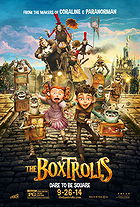 Posted : 10 years, 2 months ago on 16 April 2015 03:36
(A review of The Boxtrolls (2014))
Posted : 10 years, 2 months ago on 16 April 2015 03:36
(A review of The Boxtrolls (2014))Of the five films nominated for Best Animated Feature at this year’s Oscar ceremony, The Boxtrolls is undoubtedly the weakest of the lot. Shame, as normally Laika produces my favorite nominee in the given year. No, I’m not quite over the failure of both Coraline and ParaNorman to win in their respective years.
The main problem with The Boxtrolls is that its disparate parts never weld together as well as Laika’s other feature films managed. There are elements of class struggles, racism, family structures and dynamics, and two villainous sidekicks who continually have existential moments of doubt of whether what they are doing is good or bad. That’s a lot for any film to carry, and it doesn’t always carry it evenly towards its finish line.
Not to mention the strange diversion in which we learn that a main character is essentially a drag queen and loves it, with little explanation as to why they’re doing this and what they hope to achieve with it. Or the lone major female character who is a concoction of entitled brat, snide, smart, and exceedingly bossy. She mostly hovers around shrilly, but every so often, they’ll color her character with more depth by revealing a morbid streak as deep and wide as her privileged entitlement.
This isn’t Laika’s first dud by any means, but it is a strangely convoluted film. Doesn’t mean it isn’t without Laika’s typical attention to warm textures, colors, and highly detailed worlds. This one more asymmetrical, creating a colorful underground where the boxtrolls reside filled with mechanical gizmos and a quirky sense of construction. It’s always a pleasure to sit back and absorb the beauty of their hand-crafted worlds and unique character designs. The Boxtrolls assigns each of the titular trolls with a separate identity by outfitting their boxes with a specific design, much like the seven dwarfs were named after their dominant trait.
There’s plenty to admire and warmly greet in this film, and maybe my more muted reaction to the film is more emblematic of my out-sized expectations on a Laika product than the product itself. What’s here is fine quality, but it’s not a patch on their previous works.
The main problem with The Boxtrolls is that its disparate parts never weld together as well as Laika’s other feature films managed. There are elements of class struggles, racism, family structures and dynamics, and two villainous sidekicks who continually have existential moments of doubt of whether what they are doing is good or bad. That’s a lot for any film to carry, and it doesn’t always carry it evenly towards its finish line.
Not to mention the strange diversion in which we learn that a main character is essentially a drag queen and loves it, with little explanation as to why they’re doing this and what they hope to achieve with it. Or the lone major female character who is a concoction of entitled brat, snide, smart, and exceedingly bossy. She mostly hovers around shrilly, but every so often, they’ll color her character with more depth by revealing a morbid streak as deep and wide as her privileged entitlement.
This isn’t Laika’s first dud by any means, but it is a strangely convoluted film. Doesn’t mean it isn’t without Laika’s typical attention to warm textures, colors, and highly detailed worlds. This one more asymmetrical, creating a colorful underground where the boxtrolls reside filled with mechanical gizmos and a quirky sense of construction. It’s always a pleasure to sit back and absorb the beauty of their hand-crafted worlds and unique character designs. The Boxtrolls assigns each of the titular trolls with a separate identity by outfitting their boxes with a specific design, much like the seven dwarfs were named after their dominant trait.
There’s plenty to admire and warmly greet in this film, and maybe my more muted reaction to the film is more emblematic of my out-sized expectations on a Laika product than the product itself. What’s here is fine quality, but it’s not a patch on their previous works.
 0 comments, Reply to this entry
0 comments, Reply to this entry
How to Train Your Dragon 2
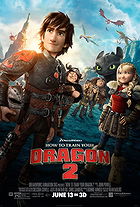 Posted : 10 years, 2 months ago on 16 April 2015 03:36
(A review of How to Train Your Dragon 2 (2014))
Posted : 10 years, 2 months ago on 16 April 2015 03:36
(A review of How to Train Your Dragon 2 (2014))I remember how gloriously shocked and awed I was at the original How to Train Your Dragon, here was an open-hearted film that boiled down to a troubled youth and his pet getting to know each other and have an adventure. It was mercifully free of the of-the-moment pop culture gags that were dated before the movie even premiered like Shark Tale, and not a single goofy montage was set to well-known pop song that felt distractingly wedged in like the later Shrek films.
How to Train Your Dragon was mild tempered and more concerned with world building than anything else that Dreamworks typically releases. It was a lovely change of pace, but it didn’t smooth my fears about a sequel once it was announced. Once more, Dreamworks track record with this sort of thing was not on their side.
How to Train Your Dragon 2 doesn’t quite match its exquisite predecessor, but it also doesn’t fail in the slightest bit. The third act may be a bit of a disappointment, but Dragon 2 is another entry in the series which prides itself on mostly quietly enjoying the scenery, introducing us to a variation of beautifully designed and strange creatures, and even more world building and expanding its mythology.
In the five years since the first film, this sequel has moved in real-time, picking its story five years down the line as well. Now an adult and due to inherit the rule of Berk, Hiccup is happier to spend his time flying around with Toothless exploring uncharted lands and creating a map of the outside world. Along the way, Hiccup reunites with his estranged, long believed dead, mother, and battle with the villain Drago.
The groundwork is laid for a spectacular feature, and while the animation is beyond gorgeous, the story has two major setbacks. First, Valka, Hiccup’s mother, is a wasted opportunity. A character given a mysterious and daring introduction, a huge build-up, and several highly emotional scenes before being removed from the major action and turned into a minor supporting player. It’s a bait-and-switch, a character that we think is going to be prominent turned into a wasted opportunity. Second, is Drago and his entire third-act which disrupts the quiet nature of the film with a big, loud action sequence. Drago is another character who is all build-up with little-to-no payoff. These choices harm a movie that is otherwise completely engaging and enjoyable. They don’t harm it beyond taking it from an A to a solid B but it had potential for more.
How to Train Your Dragon was mild tempered and more concerned with world building than anything else that Dreamworks typically releases. It was a lovely change of pace, but it didn’t smooth my fears about a sequel once it was announced. Once more, Dreamworks track record with this sort of thing was not on their side.
How to Train Your Dragon 2 doesn’t quite match its exquisite predecessor, but it also doesn’t fail in the slightest bit. The third act may be a bit of a disappointment, but Dragon 2 is another entry in the series which prides itself on mostly quietly enjoying the scenery, introducing us to a variation of beautifully designed and strange creatures, and even more world building and expanding its mythology.
In the five years since the first film, this sequel has moved in real-time, picking its story five years down the line as well. Now an adult and due to inherit the rule of Berk, Hiccup is happier to spend his time flying around with Toothless exploring uncharted lands and creating a map of the outside world. Along the way, Hiccup reunites with his estranged, long believed dead, mother, and battle with the villain Drago.
The groundwork is laid for a spectacular feature, and while the animation is beyond gorgeous, the story has two major setbacks. First, Valka, Hiccup’s mother, is a wasted opportunity. A character given a mysterious and daring introduction, a huge build-up, and several highly emotional scenes before being removed from the major action and turned into a minor supporting player. It’s a bait-and-switch, a character that we think is going to be prominent turned into a wasted opportunity. Second, is Drago and his entire third-act which disrupts the quiet nature of the film with a big, loud action sequence. Drago is another character who is all build-up with little-to-no payoff. These choices harm a movie that is otherwise completely engaging and enjoyable. They don’t harm it beyond taking it from an A to a solid B but it had potential for more.
 0 comments, Reply to this entry
0 comments, Reply to this entry
Thelma & Louise
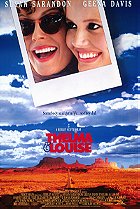 Posted : 10 years, 2 months ago on 14 April 2015 03:31
(A review of Thelma & Louise)
Posted : 10 years, 2 months ago on 14 April 2015 03:31
(A review of Thelma & Louise)1991 was a great year for films with fully realized females in the lead roles, equally empowered and neurotic messes. They were recognizable as real people, maybe not people we knew in our real lives, but people that felt plausible, layered, and contradictory. Silence of the Lambs, Beauty and the Beast, The Prince of Tides, Fried Green Tomatoes, Ramblin’ Rose -- all of them feature deeply complicated, complete female characters in major roles. It felt like a possible turning point in which films proved that the entire industry didn’t need to cater to the male audience so consistently for big dollars.
Perhaps no film sent that shockwave as deeply as Thelma & Louise did, a pop-culture feminist manifesto in which two women rebel against society and revel in the deep bonds of sisterhood. It’s a heady mixture of road movie, buddy picture, and outlaws-on-the-run. Yet the script, direction, and lead performances find the balance between these three genres, weaving them together effortlessly, and popping out a pop masterpiece out of the other side.
The story concerns two best friends, the sweeter Thelma (Geena Davis) and the more world-weary Louise (Susan Sarandon), getting together for a weekend getaway. Of course, something goes horribly wrong to send them on their inevitable raging wake of pent-up feminine aggression. A would be rapist gets killed in self-defense, knowing that no one would believe their story, they go on the run.
Along the way they grow not only as people, gaining even more agency and rebellious spirit, but seem to speak against the very structure of society. These two women are mad as hell and aren’t going to take it anymore. Not only is the rapist taken down, but so is a trucker who makes unwanted sexual advances at them. They don’t kill him, but they destroy his truck. They rage against the paternal cop hot on their trail, a would-be savior that they dismantle at every turn with his unintended condescension towards them. These two don’t need anyone to save them, they’ll save themselves and each other.
That final scene is the existential battle cry. This is their decision, and they’ve decided that no one else is going to be making any decisions for them. It’s a bleak unhappy ending on one hand, but an ambiguous victory on the other. I can only imagine the deep catharsis that must have been felt by female movie-goers during the time this came out. As a feminist I encourage them to rage, to fight back, to discover themselves and make an uncompromising final choice with their lives. It’s one hell of a sucker-punch. Pity it didn’t start a wave of female-centric variations of genres until much, much later.
Perhaps no film sent that shockwave as deeply as Thelma & Louise did, a pop-culture feminist manifesto in which two women rebel against society and revel in the deep bonds of sisterhood. It’s a heady mixture of road movie, buddy picture, and outlaws-on-the-run. Yet the script, direction, and lead performances find the balance between these three genres, weaving them together effortlessly, and popping out a pop masterpiece out of the other side.
The story concerns two best friends, the sweeter Thelma (Geena Davis) and the more world-weary Louise (Susan Sarandon), getting together for a weekend getaway. Of course, something goes horribly wrong to send them on their inevitable raging wake of pent-up feminine aggression. A would be rapist gets killed in self-defense, knowing that no one would believe their story, they go on the run.
Along the way they grow not only as people, gaining even more agency and rebellious spirit, but seem to speak against the very structure of society. These two women are mad as hell and aren’t going to take it anymore. Not only is the rapist taken down, but so is a trucker who makes unwanted sexual advances at them. They don’t kill him, but they destroy his truck. They rage against the paternal cop hot on their trail, a would-be savior that they dismantle at every turn with his unintended condescension towards them. These two don’t need anyone to save them, they’ll save themselves and each other.
That final scene is the existential battle cry. This is their decision, and they’ve decided that no one else is going to be making any decisions for them. It’s a bleak unhappy ending on one hand, but an ambiguous victory on the other. I can only imagine the deep catharsis that must have been felt by female movie-goers during the time this came out. As a feminist I encourage them to rage, to fight back, to discover themselves and make an uncompromising final choice with their lives. It’s one hell of a sucker-punch. Pity it didn’t start a wave of female-centric variations of genres until much, much later.
 0 comments, Reply to this entry
0 comments, Reply to this entry
Tetro
 Posted : 10 years, 2 months ago on 13 April 2015 08:26
(A review of Tetro)
Posted : 10 years, 2 months ago on 13 April 2015 08:26
(A review of Tetro)You’ve got to give major respect to Francis Ford Coppola for deciding to follow his muse this late in the game and continuing to make films like he’s fresh out of art-school. Do these films always work? No, but there’s a sense of adventure about his latest period of film-making that’s refreshing. These films are self-financed, so at least we’re confident in knowing that they’re exactly what he wants and meant for them to be.
And with Tetro, I think it’s safe to say that Coppola has made another solid feature film. No, it’s better than that. It might reach the heights of some of his masterpieces, but it’s pretty great.
Primarily filmed in black-and-white, color flourishes are reserved for fantasy sequences, Tetro marries Coppola’s two primary story-telling modes: big, operatic pieces and miniature character-focused pieces. Occasionally this marriage of the two styles gets away from him at the expense of the narrative, but he makes up for it with images that are consistently beautiful, bordering on ethereal at times, and heavily influenced by noir in others.
The story concerns the reunion of two long-estranged brothers in modern day Buenos Aires. This intimate bond, and the long-buried secrets that have kept them estranged, concerns much of the plot of the film. It unravels at a leisurely pace for the first hour or so, until the third act blows the entire roof off the joint in its operatic styling and revelations.
Coppola’s cast is game, and the three major players all deliver solid work. Alden Ehrenreich makes his debut here, and does solid work. Maribel Verdú stars as Tetro’s wife, and much like her work in Pan’s Labyrinth, she brings a soulful and supportive maternity along with a free-spirited nature. But it’s Vincent Gallo’s performance in the titular role that lingers the longest in the memory. His large eyes project a haunted and manic nature, and it’s his performance that ties together the earlier chamber pieces with the later excesses that threaten to overcook the material.
Despite being a little uneven in spots, Tetro holds out interests because it manages to invest us so deeply in the emotions and secrets of these three characters. The third-act reveal makes everything that has come before it shine in a different light, and things that once seemed oblique make perfect sense. It’s a strange, intoxicating blend of material, yet Coppola is clearly doing exactly what he wants to artistically. That kind of commitment is to be applauded, as is his penchant for still crafting small, independent art house fare while so many of his peers simply kick-back and cash in on grand, blockbuster entertainments.
And with Tetro, I think it’s safe to say that Coppola has made another solid feature film. No, it’s better than that. It might reach the heights of some of his masterpieces, but it’s pretty great.
Primarily filmed in black-and-white, color flourishes are reserved for fantasy sequences, Tetro marries Coppola’s two primary story-telling modes: big, operatic pieces and miniature character-focused pieces. Occasionally this marriage of the two styles gets away from him at the expense of the narrative, but he makes up for it with images that are consistently beautiful, bordering on ethereal at times, and heavily influenced by noir in others.
The story concerns the reunion of two long-estranged brothers in modern day Buenos Aires. This intimate bond, and the long-buried secrets that have kept them estranged, concerns much of the plot of the film. It unravels at a leisurely pace for the first hour or so, until the third act blows the entire roof off the joint in its operatic styling and revelations.
Coppola’s cast is game, and the three major players all deliver solid work. Alden Ehrenreich makes his debut here, and does solid work. Maribel Verdú stars as Tetro’s wife, and much like her work in Pan’s Labyrinth, she brings a soulful and supportive maternity along with a free-spirited nature. But it’s Vincent Gallo’s performance in the titular role that lingers the longest in the memory. His large eyes project a haunted and manic nature, and it’s his performance that ties together the earlier chamber pieces with the later excesses that threaten to overcook the material.
Despite being a little uneven in spots, Tetro holds out interests because it manages to invest us so deeply in the emotions and secrets of these three characters. The third-act reveal makes everything that has come before it shine in a different light, and things that once seemed oblique make perfect sense. It’s a strange, intoxicating blend of material, yet Coppola is clearly doing exactly what he wants to artistically. That kind of commitment is to be applauded, as is his penchant for still crafting small, independent art house fare while so many of his peers simply kick-back and cash in on grand, blockbuster entertainments.
 0 comments, Reply to this entry
0 comments, Reply to this entry
The Big Chill
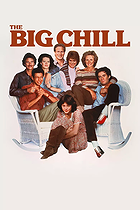 Posted : 10 years, 2 months ago on 13 April 2015 06:40
(A review of The Big Chill)
Posted : 10 years, 2 months ago on 13 April 2015 06:40
(A review of The Big Chill)Count me in as one of the detractors of this film. As one of the many who this as Exhibit A of what can, and does, make the Baby Boomer generation so goddamn insufferable whenever they go off on their “You had to be there, man” nostalgia riffs. The film views these characters with sympathy, but I couldn’t muster up much for them.
This group of people can’t seem to look beyond their navels. If they do, it’s only to then look towards the past with rose-tinted glasses, believing that the time that they came up was somehow the pinnacle of achievement. It frequently feels like self-indulgence of a bunch of wealthy white people unable to see their mass privilege. To be perfectly blunt about it, here’s a group of seven supremely glib people who treat the eighth, the audience surrogate, as a child when she’s really just a slightly younger member of their generation.
Shame to, as the ensemble on this thing is stacked with powerhouse acting titans. Jeff Goldblum, Glenn Close, William Hurt, Kevin Kline, Tom Berenger, JoBeth Williams, Meg Tilly, and Mary Kay Place give the script better life than it deserves. They deliver their series of unnecessarily clever one-liners with consummate skill. Try as they might though, they can’t overcome how easily the script leans on humor in place of real emotion and feeling.
If all of this nostalgia and introspection had been given more true emotional life, I probably wouldn’t have been so blasé on the whole enterprise. It scored to a phenomenal soundtrack, at times employed with cringe-inducing sequences, and stacked with a fabulous ensemble, so The Big Chill is never without its merits. It’s just so damn manipulative. Leaning on hard on these well-to-do white folks using the music of the Civil Rights era as their soundtrack for a weekend getaway is questionable if I’m being generous, and offensive if I’m being honest. And have I mentioned how much I dislike the pithy dialog? But that damn cast, though. The Big Chill is a movie that has me slightly split, cause where it’s good it soars, but where it’s bad, it’s smugly self-congratulatory.
This group of people can’t seem to look beyond their navels. If they do, it’s only to then look towards the past with rose-tinted glasses, believing that the time that they came up was somehow the pinnacle of achievement. It frequently feels like self-indulgence of a bunch of wealthy white people unable to see their mass privilege. To be perfectly blunt about it, here’s a group of seven supremely glib people who treat the eighth, the audience surrogate, as a child when she’s really just a slightly younger member of their generation.
Shame to, as the ensemble on this thing is stacked with powerhouse acting titans. Jeff Goldblum, Glenn Close, William Hurt, Kevin Kline, Tom Berenger, JoBeth Williams, Meg Tilly, and Mary Kay Place give the script better life than it deserves. They deliver their series of unnecessarily clever one-liners with consummate skill. Try as they might though, they can’t overcome how easily the script leans on humor in place of real emotion and feeling.
If all of this nostalgia and introspection had been given more true emotional life, I probably wouldn’t have been so blasé on the whole enterprise. It scored to a phenomenal soundtrack, at times employed with cringe-inducing sequences, and stacked with a fabulous ensemble, so The Big Chill is never without its merits. It’s just so damn manipulative. Leaning on hard on these well-to-do white folks using the music of the Civil Rights era as their soundtrack for a weekend getaway is questionable if I’m being generous, and offensive if I’m being honest. And have I mentioned how much I dislike the pithy dialog? But that damn cast, though. The Big Chill is a movie that has me slightly split, cause where it’s good it soars, but where it’s bad, it’s smugly self-congratulatory.
 0 comments, Reply to this entry
0 comments, Reply to this entry
 Login
Login
 Home
Home 95 Lists
95 Lists 1531 Reviews
1531 Reviews Collections
Collections